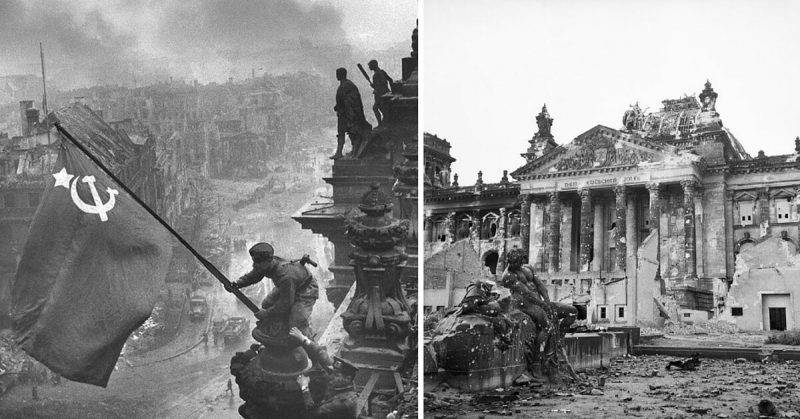Berlin, the heart of the Reich didn’t fall easily. The Red Army was pushing aggressively through the German territory, stronger than ever, but the German had one last fight in them in defense of the homeland, which they had pronounced at the beginning of the war as invulnerable to the enemy.
The Soviet invasion was temporarily halted following the Vistula-Oder Offensive, only 60 km away from Berlin. The offensive saw liberation Polish cities, Warsaw, Poznan and Krakow. Meanwhile, the command of the defense was given to Gotthard Heinrici, one of the last able generals of the Wehrmacht. Even though he had only a month to dig in and prepare the city defense, the effort seemed futile.
The Red Army brought 2,500,000 soldiers, a powerful force of battle-hardened veterans with the thirst for revenge, after the German aggression in the Soviet Union. They also included more than 6,000 tanks, 7,500 aircraft and approximately 45,000 artillery pieces.
The defenders were outnumbered and undermanned, since the German Army, in their desperate attempt to defend Berlin, recruited the Hitler Youth into their ranks. These kids were between 14 and 18 years old, had no combat experience and only served as cannon fodder for the Soviets. Also, as the last line of defense, the Nazi Party recruited the citizens of Berlin into a rag-tag militia.
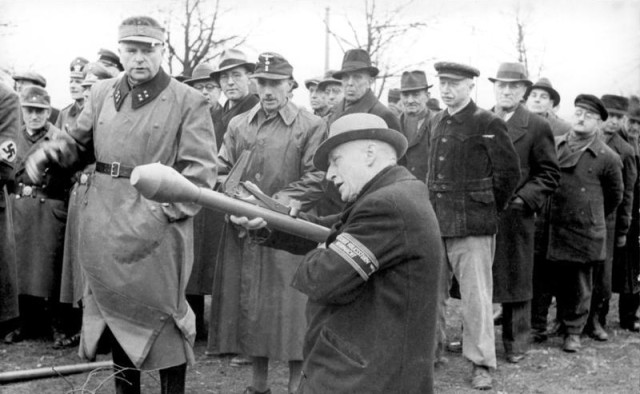
They were called the Volkssturm and most of them were senior citizens. The defense force designated for defending what was left of the Reich was 766,750 soldiers, 1,519 armored fighting vehicles, 2,224 airplanes and 9,303 artillery pieces, but within the Berlin Defense Area, only 45,000 soldiers with 40,000 Volkssturm and Hitler Youth members managed to operate throughout the battle.
The Soviets outnumbered and outgunned the enemy significantly, victory was well within their grasp.
The Battle of Berlin started on 16 April and ended on May 2 with the decisive victory that marked the end of the greatest military conflict in the history of mankind. The only major line of the Berlin city defense was at the Seelow Heights, also known as the “Gates of Berlin” as the main eastern route runs through. After several days of intense fighting, the “gates” were breached.
On April 19, the battle was over, with 12,000 Germans killed and 20,000 Red Army soldiers dead or wounded. The Battle of Seelow Heights is considered to be one of the last pitched battles of the war, as both sides prepared for the encounter at that exact location, which proved to be an inevitable battleground. For the next two weeks, the fighting continued on the streets of Berlin.
Every street, every block, and every apartment represented a battlefield, for the Germans, in their last desperate attempt, were rather willing to die, than to fall into the hands of the enemy.
And they were, perhaps, right to do so, for years of combat and Uncle Joe’s propaganda effort turned the Red Army into a vengeful fist, determined to crush the German Reich and lay waste to its capital city. They were led by Marshall Zhukov, who was, according to legend, instructed to capture Hitler and deliver him to Moscow in a golden cage.
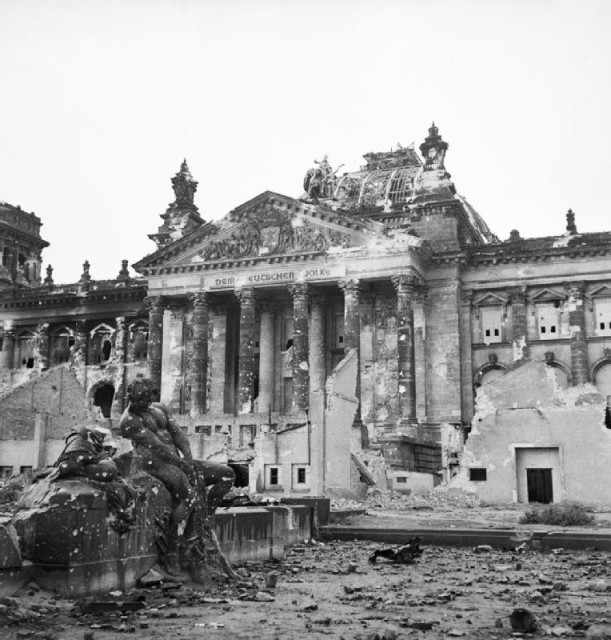
After the Battle of the Seelow Heights, only broken Wehrmacht formations laid between the outskirts of Berlin and the Reichstag, the symbolic heart of the German war machine, even though the building hadn’t been in use since the great fire in February 1933. By April 23rd, 1945, elements of the Soviet 1st and 2nd Belarussian Front (Army group) and the 1st Ukrainian front had completely encircled Berlin. The noose was getting tighter around Hitler’s neck.
Hitler appointed SS Brigadefuhrer Wilhelm Mohnke as the Battle Commander for the central government district that included the Reich Chancellory and the Fuhrerbunker. A counter-offensive was organized, but had no success of breaking the siege.
In the early hours of 29 April the Soviet 3rd Shock Army crossed the Moltke bridge and started to fan out into the surrounding streets and buildings. The initial assaults on buildings, including the Ministry of the Interior, were hampered by the lack of supporting artillery. It was not until the damaged bridges were repaired that artillery could be moved up in support.
At 04:00 hours, in the Führerbunker, Hitler signed his last will and testament and, shortly afterward, married Eva Braun. At dawn, the Soviets pressed on with their assault in the southeast. After very heavy fighting they managed to capture Gestapo headquarters on Prinz Albrechtstrasse, but a Waffen-SS counter-attack forced the Soviets to withdraw from the building. To the southwest, the 8th Guards Army attacked north across the Landwehr canal into the Tiergarten.
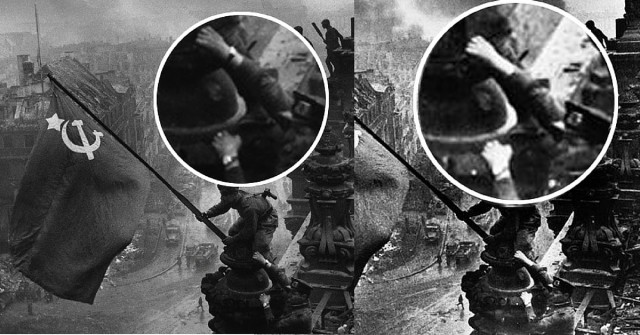
By the next day, the 30th April, the Soviets had solved their bridging problems and with artillery support at 06:00 they launched an attack on the Reichstag, but because of German entrenchments and support from 12.8 cm guns 2 km (1.2 mi) away on the roof of the Zoo flak tower, in Berlin Zoo, it was not until that evening that the Soviets were able to enter the building. The German troops inside were heavily entrenched. Fierce room-to-room fighting ensued.
At that point, there was still a large contingent of German soldiers in the basement who launched counter-attacks against the Red Army. Finally, on 2 May 1945, the Red Army controlled the building entirely. The famous photo of the two soldiers planting the flag on the roof of the building is a re-enactment photo taken the day after the building was taken. The event with the flag originally occurred at 22:40 hours on April 30th, 1945, and it was raised by Lieutenant Rakhminzhan Qoshqarbaev.
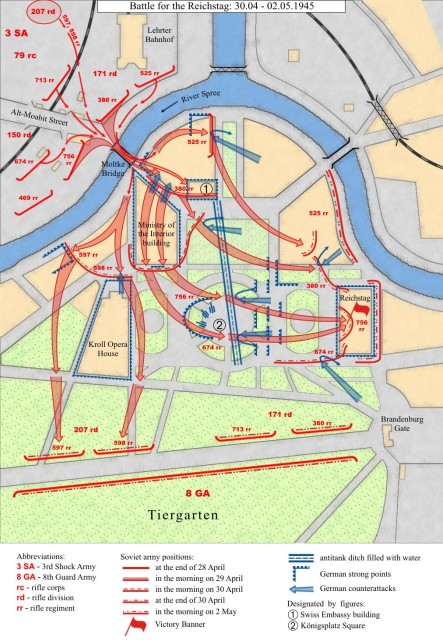
The soldiers had orders from Stalin personally to take the Reichstag building, the “heart of the fascist beast”, before the May 1st, International Workers’ Day. The photo that features the re-enactment was also altered with adding smoke in the background for dramatic effect. Also, a watch on the wrist of one of the soldiers was edited out of the photo, as it implied that the Red Army troops committed looting. It was taken by a photographer, Yevgeny Khaldei.
To the Soviets, the event as represented by the photo became symbolic of their victory demonstrating that the Battle of Berlin, as well as the Eastern Front hostilities as a whole, ended with the total Soviet victory. As the 756th Regiment’s commander Zinchenko had stated in his order to Battalion Commander Neustroev:
“… the Supreme High Command … and the entire Soviet People order you to erect the victory banner on the roof above Berlin”.
